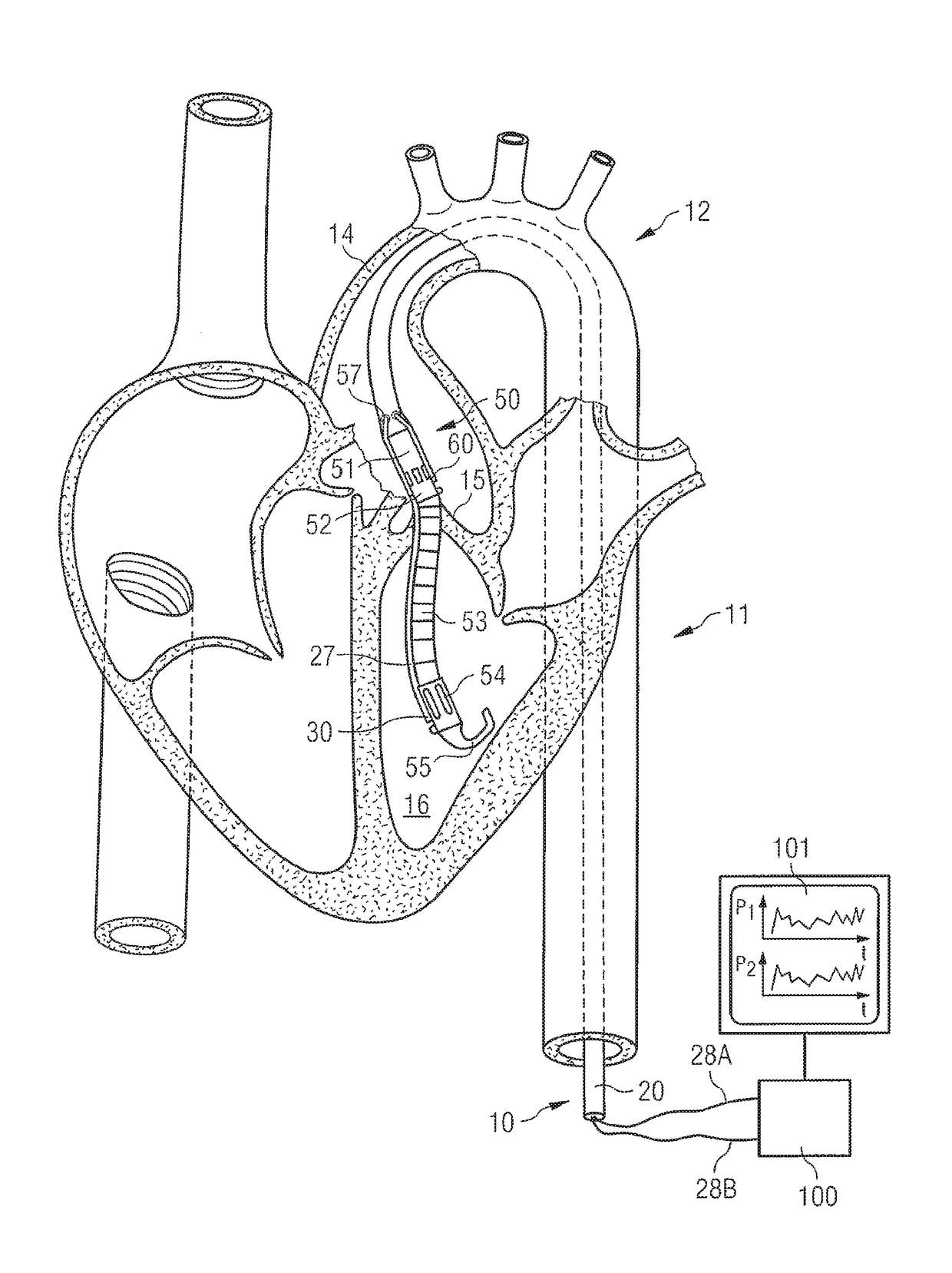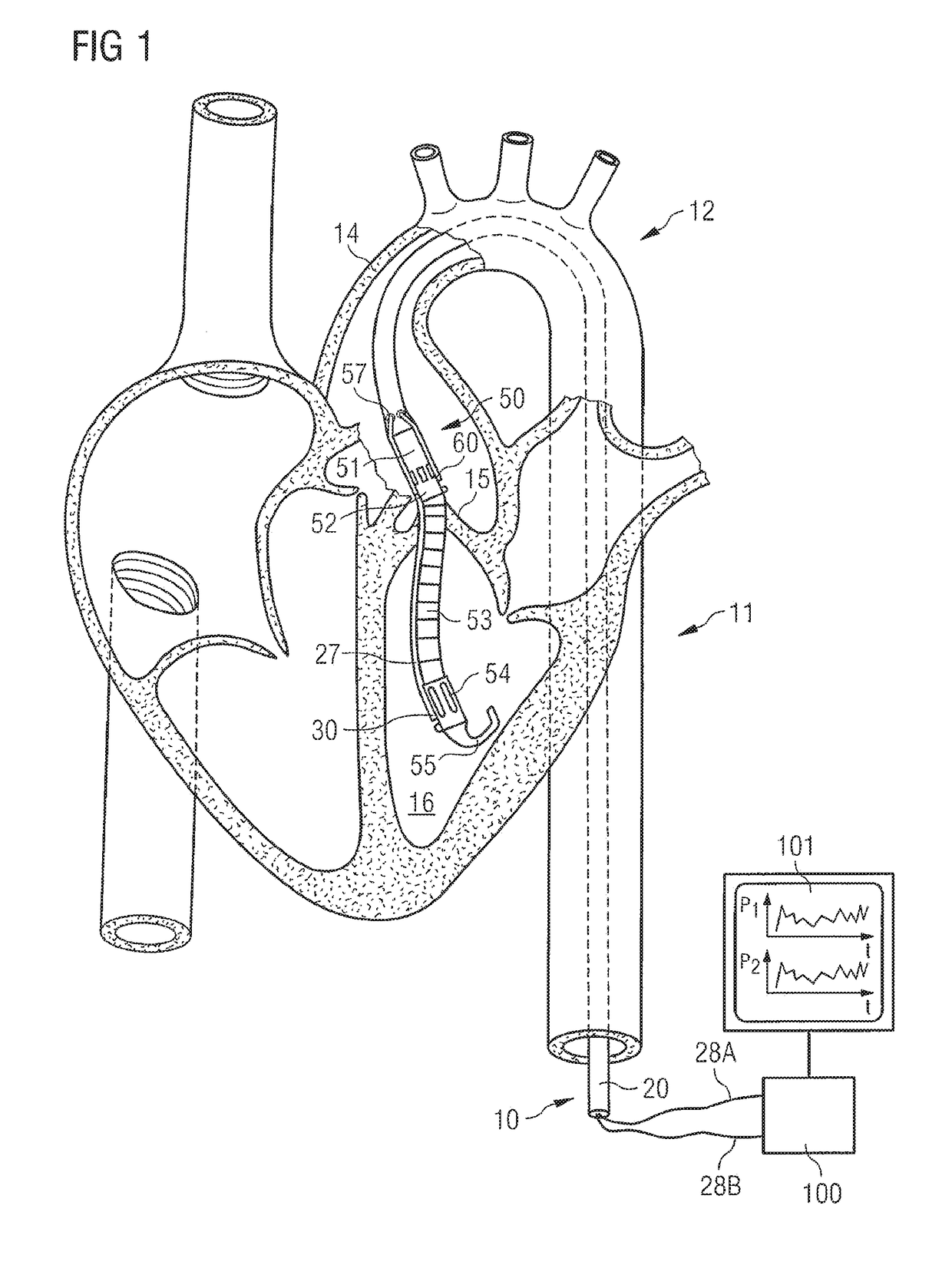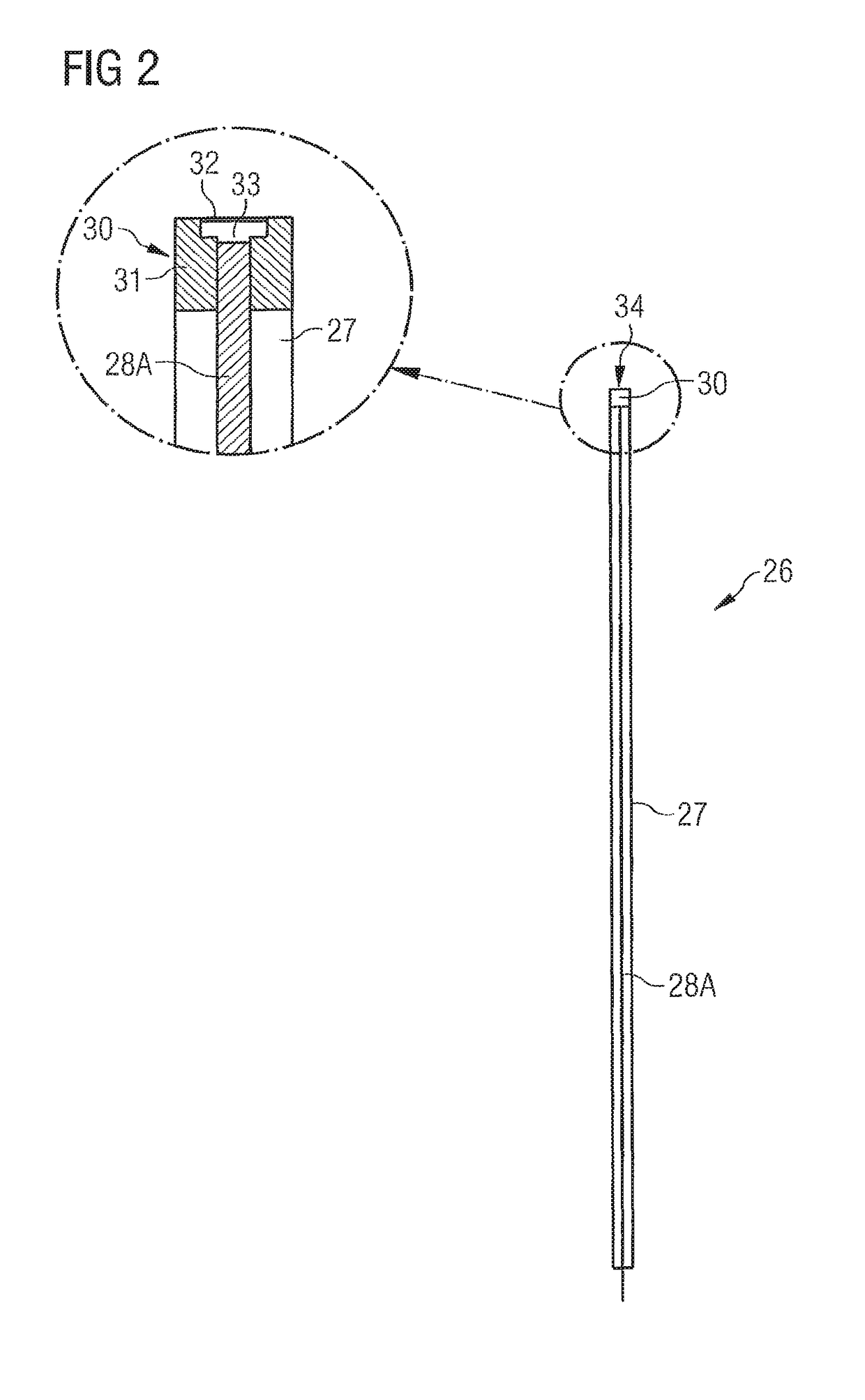Catheter system and intravascular blood pump comprising said catheter system
a catheter system and catheter technology, applied in the field of catheter systems, can solve the problems of physician failure, catheter can jam and bend back on itself, and the kinking is not always perceptible to the treating physician,
- Summary
- Abstract
- Description
- Claims
- Application Information
AI Technical Summary
Benefits of technology
Problems solved by technology
Method used
Image
Examples
Embodiment Construction
[0024]FIG. 1 shows an intravascular blood pump having a catheter 10 which is introduced into the descending aorta 11 retrograde. The descending aorta is part of the aorta 12 which first ascends from the heart and then descends and has the aortic arch 14. At the beginning of the aorta 12 there is located the aortic valve 15 which connects the left ventricle 16 to the aorta 12 and through which the intravascular blood pump extends. The intravascular blood pump comprises in addition to the catheter 10 a rotary pumping device 50 fastened at the distal end of the catheter hose 20 and having a motor section 51 and a pump section 52 disposed at an axial distance therefrom, as well as a flow cannula 53 protruding in the distal direction from the inflow end of the pump section 52 and having a suction inlet 54 located at its end. Distally of the suction inlet 54 there is provided a soft-flexible tip 55, which can be configured for example as a “pigtail” or in a J shape. Through the catheter h...
PUM
 Login to View More
Login to View More Abstract
Description
Claims
Application Information
 Login to View More
Login to View More - R&D
- Intellectual Property
- Life Sciences
- Materials
- Tech Scout
- Unparalleled Data Quality
- Higher Quality Content
- 60% Fewer Hallucinations
Browse by: Latest US Patents, China's latest patents, Technical Efficacy Thesaurus, Application Domain, Technology Topic, Popular Technical Reports.
© 2025 PatSnap. All rights reserved.Legal|Privacy policy|Modern Slavery Act Transparency Statement|Sitemap|About US| Contact US: help@patsnap.com



